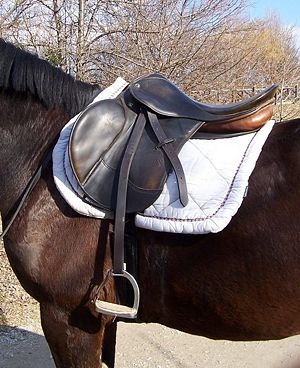Horse/Choosing a horse: Difference between revisions
imported>Nancy Sculerati MD |
imported>Nancy Sculerati MD |
||
| Line 10: | Line 10: | ||
=Discipline: what do you want from the horse?= | =Discipline: what do you want from the horse?= | ||
[[Image:English saddle.jpg|thumbnail|left| "English" implies a set of tack, like this English saddle, but also a stle of riding, that is ordinarily close contact. Although Western style riding includes classes in English pleasure, horses trained for that discipline may not be as comfortable with being ridden "on the bit".]] | |||
==Competition== | ==Competition== | ||
Revision as of 13:49, 2 February 2007
Choosing a horse involves
Horse or pony?
Age
Breed
Gelding, Mare, or Stallion?
Discipline: what do you want from the horse?
Competition
Trail (Hack)
Companion horse
Available facilities: what can you offer the horse?
"Horse traders"- Caveat emptor!
Where can a horse be obtained?
Breed Organizations
Trainers
Public sales
Auctions
Rescue horses
In the UK, the RSPCA offers horse adoption [1]
Racehorses
Thoroughbred race horses [2]. Other organizations place a variety of race horses, including standard bred pacers [3]
How can a horse be properly evaluated?
Avoiding injury
The reality of equestrian activities is that death and serious injury, including permanent paralysis, are not rare events. Such outcomes cannot be entirely prevented by proper training of horse and rider, the correct use of sound equipment in adequate facilities, or by riding only under proper supervision - but they can be readily prompted by any or all of the opposite practices. Horse shopping can be a very dangerous pastime for that reason.
The equestrian who is interested in avoiding catastrophe is generally advised to never ride a horse, no matter how safe and well-trained the animal is said to be, without seeing the horse ridden immediately beforehand by a person who is familiar with it.
